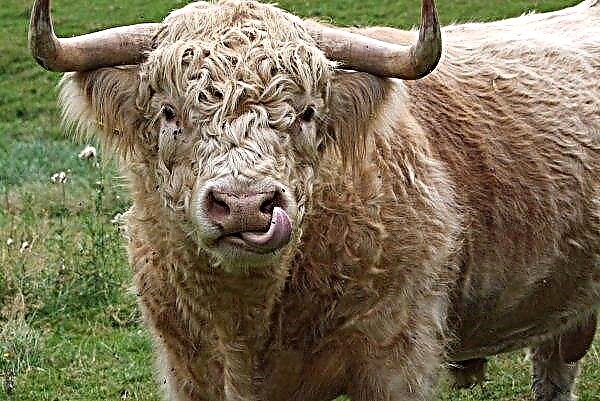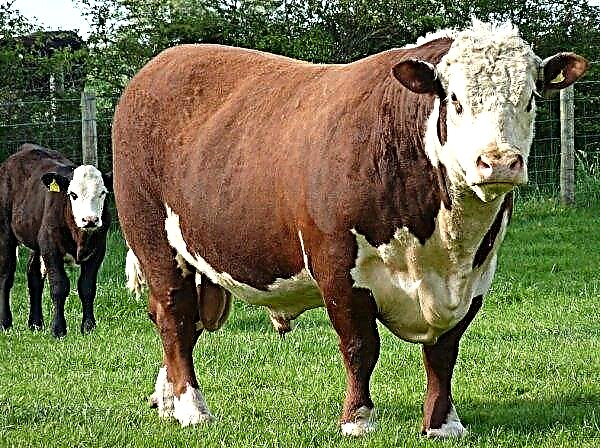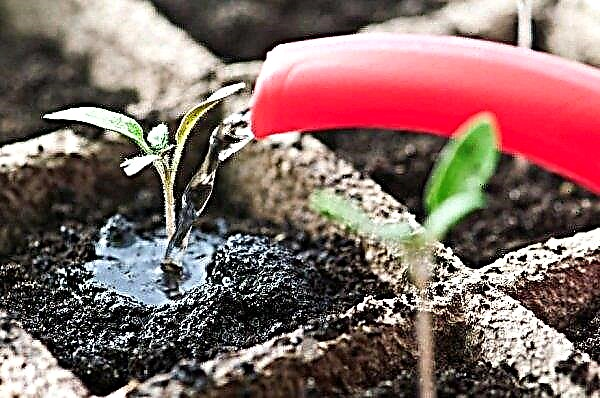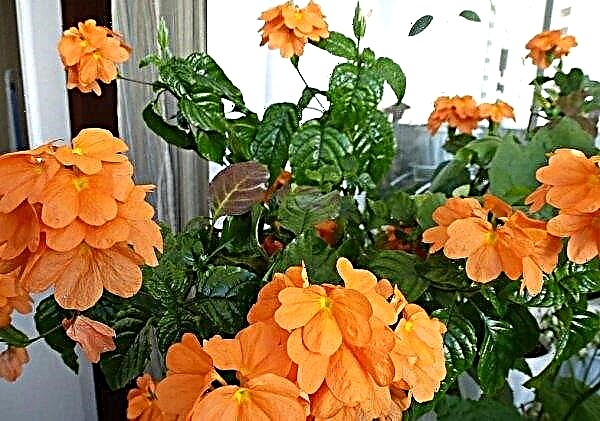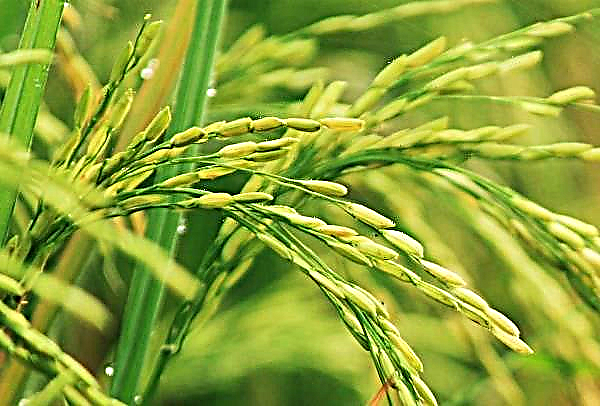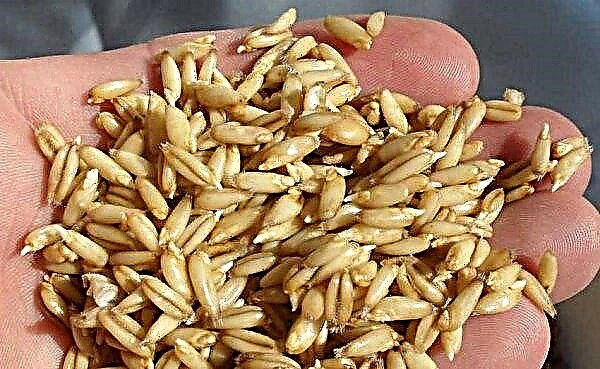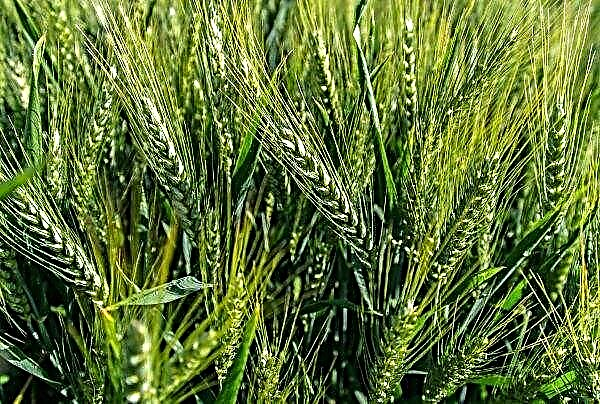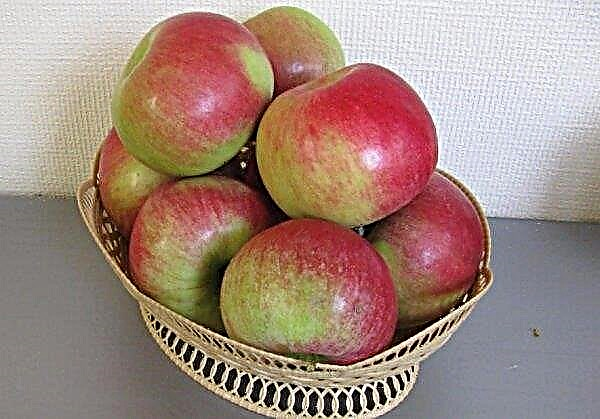Automation of any process significantly reduces human labor costs, therefore, even in agriculture and truck farming people often resort to using systems and machines. This also applies to the organization of irrigation in the greenhouse, but you will learn what kind of humidification method to choose and what you should know about self-installing the system from this article.
Features of autowatering
Autowatering in a greenhouse is a closed system, the functioning of which ensures that the substrate is moistened in a clearly allotted time, using the optimal amount of irrigation liquid and all kinds of mineral additives (if their use is intended).
The main components of such a system are:
- Among the main advantages of any type of automatic irrigation systems it is worth noting:
- reduction of labor costs of a gardener;
- water saving (it is distributed as efficiently as possible and is not wasted in vain);
- the best growth and development of planted crops that regularly receive the required dose of moisture.
As for the shortcomings of such equipment, it is worth considering the high cost of finished systems and the need for accurate installation of all components. In addition, with regular moistening of plants, the humidity in the greenhouse will be increased, which is definitely worth considering when growing crops that need to be supported by low humidity.
Criterias of choice
There are several main types of automatic irrigation systems on the modern market, and the choice of a particular mechanism usually depends on the design of the greenhouse itself and the requirements of the crops grown in it. Types, device, advantages and disadvantages of each possible option are presented in the following table.
Types, device, advantages and disadvantages of each possible option are presented in the following table.
| Type of irrigation system and its structure | Benefits | disadvantages |
| Drip The fluid from the water tank to the plants is supplied by special tapes laid on the surface of the soil. Each plant has its own openings for removing moisture. | The probability of soil waterlogging is significantly reduced, water is saved (up to about 30% compared to standard irrigation). In addition, weeds grow and develop worse. | The comparative high cost of both the finished system and individual parts to create a home-made device. The need to use only pure water, since the smallest impurities can clog the drip tapes. |
| Sprinkling From the tank with water, the liquid is transferred through separate hoses, after which it enters the sprinklers, which can be placed under the roof of the structure or at ground level. Water enters the ground in the form of small drops and well irrigates the soil in the beds. | The ability to use just one sprayer to irrigate a large section of the bed. Metered fluid supply. | The possibility of an excessive increase in humidity in the greenhouse and the appearance of sunburns on the leaf plates of plants (appear as a result of drops falling on their surface). |
| Underground irrigation (subsoil) This option of moistening the soil is perfect for those cases when the crops grown do not tolerate a humid environment. The device of the system provides for the existence of an underground wiring of hoses (with thick walls). From each hose, water flows directly to the roots of the crops. | The most effective irrigation system, which in addition to moisturizing the soil additionally provides its aeration. | The complexity of arranging the irrigation system, which is largely due to the need for excavation in the greenhouse. |
It is difficult to say exactly which of the presented options is best, therefore, when choosing a specific type of irrigation system, each summer resident should be based on the characteristics of the crops grown and the microclimate in the greenhouse.
For example, sprinkling is perfect for industrial buildings with a large area, especially if you take care of the possibility of moving the irrigation system directly under the roof. SprinklingFor small private greenhouses, a drip irrigation system is considered a more suitable option.delivering moisture directly to the root system of each plant.
SprinklingFor small private greenhouses, a drip irrigation system is considered a more suitable option.delivering moisture directly to the root system of each plant.
Cucumbers, tomatoes and peppers do not respond well to waterlogging, and there is an opportunity to avoid waterlogging and the development of putrefactive processes on the aerial parts of crops.
Important! When arranging a drip irrigation system, it is worthwhile to install a filter on the tank with water, especially if the liquid is supplied in the area from rivers or lakes without thorough cleaning (process water).
Types and design
Some types of the described systems can be made from improvised materials, and in terms of functionality they will not be inferior to ready-made purchased devices. The simplest types of such installations are deservedly considered products based on ordinary plastic bottles and large barrels (preferably also plastic).
From the bottles
For a small bed, a drip irrigation system can be built from standard bottles with a cut bottom. 2–5 holes need to be cut (punctured) in the lids of the containers, after which each bottle should be installed next to various plants, so that the lid is placed underground, as close to the root system, at an angle of about 60–70 °.
The upper, cut-off part serves to fill the water, sometimes mixed with liquid mineral fertilizers. The main disadvantage of this design is the limited volume of the tank, so it is advisable to choose larger containers with a conical plastic spout installed at the end (available at a garden store). Drip drip irrigation system from a bottle For deep underground irrigation of the root system, you can use an alternative option: make a hole on the walls of the bottle from 10 to 15 in height and bury it between the plants in the garden.
Drip drip irrigation system from a bottle For deep underground irrigation of the root system, you can use an alternative option: make a hole on the walls of the bottle from 10 to 15 in height and bury it between the plants in the garden.
Subsequently, water is simply added through the neck (it remains on the surface), and it is distributed as needed underground, moistening the rhizome of planted crops.
From the barrel
An irrigation system can be made from a barrel if there is a suitable plastic reservoir (preferably about 200 l in volume), a low-pressure plastic pipe with a cross section of 30-50 mm in diameter, a cleaning filter, simple drip tapes with a diameter of 16 mm and a wall thickness of at least 4 mm
Prepared plastic hose must be laid with the edge of the beds over the entire area of the site. In the immediate vicinity of the barrel, it is cut at the lower level, retreating about 10 cm. This will limit the ingress of sediment into the pipes, but for more effective protection, a filter element will have to be installed inside the tank (the simplest one can be mesh). Irrigation system in a greenhouse from a barrel After connecting the main hose with the help of PND-corners, you can proceed with the installation of drip tapes, which are selected based on the strength indicator. Drip tapes are connected using start connectors, and for greater connection density, small rubber pieces can be placed under the parts.
Irrigation system in a greenhouse from a barrel After connecting the main hose with the help of PND-corners, you can proceed with the installation of drip tapes, which are selected based on the strength indicator. Drip tapes are connected using start connectors, and for greater connection density, small rubber pieces can be placed under the parts.
Important! The holes in the main pipe should be clearly opposite the beds with vegetation, so that the tape connected to them is either between the beds or in close proximity to them. Do not get lost in the organization of such holes will help preliminary marking with a marker.
The drip tape is connected to the start connector so that its seam with drip holes is located downward. Whether it will be dug into the ground or will remain lying on the surface of the soil is decided by the summer resident, but upon completion of installation, it will be necessary to install a plug on the end of the tape, pressing the excess part of such a hose with it.
They are removed only at the next rinse of the drip system, when its throughput is slightly reduced.
To protect the tape from excessive pollution during operation, at an equal distance from each other, you can drive in several wooden pegs and tie the hoses to them, fixing them with a wire or any other material.
The duration of the irrigation of the beds in this case depends on the volume of the barrel, in which the water heats well under the sun.
How to make autowatering in the greenhouse with your own hands?
Do-it-yourself autowatering is not such a difficult task as it seems to many summer residents, therefore, with some knowledge, logical thinking and some necessary materials, almost anyone can cope with it. Consider one of the well-known examples of the construction of such a system in a greenhouse.
Device diagram
Any fully automatic irrigation system provides for the presence in it of not only a suitable water tank and tapes for supplying fluid to the plants themselves, but also other components, without the participation of which it is impossible to transport water, for example, a pump and a process control unit.
In general, the most famous system for drip irrigation (the optimal solution for any garden crops) looks like this: Automatic irrigation systemA detailed wiring diagram using a hose and tapes will look like this:
Automatic irrigation systemA detailed wiring diagram using a hose and tapes will look like this: Scheme of drip irrigation system It is possible to replace the individual parts presented on the scheme with other similar details, the main thing is that they cope with the functions assigned to them.
Scheme of drip irrigation system It is possible to replace the individual parts presented on the scheme with other similar details, the main thing is that they cope with the functions assigned to them.
Did you know? The first automatic irrigation systems by sprinkling appeared in the middle of the XIX century, and already in 1897 the first lawn sprinkler equipped with a gearbox was launched in America.
Automatic watering
To organize automatic drip irrigation according to the above schemes, you can perform the following sequential steps:
- To begin with, be sure to draw up a clear plan of the greenhouse, with a fixation of its size, the number of beds and bushes of plants in them. In addition, it is worth considering the need for crops in the water, as some plants more than others need moisture.
- After completing all the calculations, prepare a metal profile (you can use wooden bars) and boards, and then make a support for the tank with water from them. Also at this stage, you need to make an insert into the tank of taps and water mains so that you can immediately place the tank on the podium prepared for it.
- At the outlet of the tank, you need to install a water filter, and immediately after it - a timer or controller of the irrigation process, with an EM valve on it. If the controller, filter, pump, or any other complex systems as a result of installation are on the ground, it is worth placing them in a technological box, which will significantly extend the service life of the parts.
- The next stage is the organization on the main section, with branches from the fittings (if necessary). If possible, pipes should be placed on separate supports or stakes, limiting contact with the soil surface. It is good if, with a large area of plantings, the highway will be placed with a weak slope, which will further facilitate the drainage of water and the care of individual parts of the system.
- The ends of pipes or hoses of highways must be closed with plugs, after which it remains to drill holes for connecting droppers or irrigation tapes.
- Connect the droppers to the previously drilled holes, install microtubes and pegs to distribute the fluid.
- Place the droppers or tape pegs so that each plant on the bed can get enough moisture.
- Connect a water pipe to the tank and perform a test run of the system.
How to set automatic irrigation for a greenhouse: video
If everything is fine and the liquid appears only in the designated areas, you can set the timer to the desired frequency and duration of irrigation, while also activating the controller of the entire process.
From this moment, it remains only to control the operation of the system, preventing its clogging.
Automatic airing
With an automatic irrigation system, you will have to take care of the automation of ventilation of the structure, otherwise the probability of decay of plants is high.
Of course, in small greenhouses it is possible to open the window manually, but this method is not suitable for large structures, so you should take care of using special mechanisms in the form of handles, gears and gears.
In addition to them, monitoring devices and sensors are mandatory, which, with increasing humidity, will give a signal to open windows.
For the most efficient air distribution inside a large greenhouse, it is useful to additionally install fans that will be placed at each end of the building. It is advisable to replace the glass in the wall where the fans are mounted with blinds that tightly close the holes during the deactivation of the fans. Accordingly, when the device is operating, all blades are located horizontally, thereby ensuring a good supply of fresh air flows. In addition, do not forget to take care of the presence of a temperature sensor that monitors the operation of the exhaust system and carefully choose the location of the device.
Accordingly, when the device is operating, all blades are located horizontally, thereby ensuring a good supply of fresh air flows. In addition, do not forget to take care of the presence of a temperature sensor that monitors the operation of the exhaust system and carefully choose the location of the device.
In summer, at high air temperatures, the inlet opening behind the fan must be covered with a damp cloth.
Humidity control
The optimum level of humidity is one of the key criteria that directly affect the creation of a favorable microclimate for plants grown in the greenhouse. Most of them have enough indicators in the range of 50–70%, but when growing exotic vegetation or flowers, significant deviations in any direction are possible.
In this regard, there is a need for the artificial creation and maintenance of a humidity level, for which purpose special measuring instruments called hygrographs are installed in greenhouse premises. Hygrograph for humidity control A slightly less convenient option would be psychrometers, the readings of which during operation will have to be checked with a psychrometric table.
Hygrograph for humidity control A slightly less convenient option would be psychrometers, the readings of which during operation will have to be checked with a psychrometric table. Psychrometer for humidity control In order to prevent the formation of excessive humidity in the greenhouse, it is worth organizing a high-quality ventilation system, with the arrangement of ventilation windows, which is used when the indicated devices are not satisfactory.
Psychrometer for humidity control In order to prevent the formation of excessive humidity in the greenhouse, it is worth organizing a high-quality ventilation system, with the arrangement of ventilation windows, which is used when the indicated devices are not satisfactory.
Materials and Tools
If you decide to create a drip irrigation system according to the above scheme, then you should prepare in advance:
- a plastic barrel or other suitable reservoir from which water will flow through tapes and hoses;
- an iron profile (or wooden blocks) and boards for the construction of a stand for a barrel;
- pipes or swords for the organization of the main highways;
- a set of fittings for pipes in the places of fastening of turns and branches;
- caps for closing pipes of the main trunk hoses;
- filter for water purification;
- timer (controller) of the process of automatic distribution of fluid;
- droppers and microtubes, the diameter of which varies between 3-5 mm;
- drip tapes;
- additional devices in the form of a pump, individual taps for each irrigation line and check valves, although their installation is not considered mandatory.
As you can see, despite the fact that you can do without a ready-made irrigation system, to create a home-made one you still have to purchase various components that are not always cheap.
DIY drip irrigation: video
You can replace them with existing hoses and pipes at home, but here you have to decide how important the practicality and long-term operation of the created system is for you.
Choosing a place for installation
If with the placement of tapes and main tubular highways everything is more or less clear (they should be in close proximity to the beds), then where to determine the volumetric tank with water is not always clear.
If the design of the system includes a pump, then the barrel is not necessary to place on a hill and you can leave it next to the greenhouse, after substituting the fixing podium from the boards under the bottom.
To organize automatic irrigation without a pump, the tank will have to be installed on an elevation, which in some cases should be at a height of 2 m from the soil surface. For a long service life of the equipment, it should be hidden from precipitation by installing a small canopy over the barrel.Did you know? The historical predecessor of modern greenhouses were Roman carts with soil, which gardeners pumped out into the sun every day, and with his sunset returned to the heated room. Such actions helped year-round supply the Roman emperor Tiberius with fresh vegetables, often loved by cucumbers.
Simply put, a specific installation site is selected based on the personal preferences of the gardener and the schematic calculations of the automatic watering system, so there are no other important requirements.
How to choose a ready-made automatic irrigation system in the greenhouse?
If after studying the system of arranging homemade drip irrigation, you came to the conclusion that it is easier to purchase a ready-made system, then it remains only to answer yourself a few simple questions:
- Which watering will suit you the most (drip, rain or subsoil)?
- What are the dimensions of the greenhouse and does it have free space for the installation of equipment?
- Do you want to fully automate the flow of fluid or are you ready to take on some part of the responsibilities (for example, constantly adding water to a small tank)?
- What will be the ventilation system and how best to organize it?
- Are you ready to do all the installation work yourself or want to take the support of experienced professionals?
 In its finished form, an automatic irrigation system is a profitable solution for both small and large greenhouses, for frequent maintenance of which summer residents simply do not have time.
In its finished form, an automatic irrigation system is a profitable solution for both small and large greenhouses, for frequent maintenance of which summer residents simply do not have time.Important! For those who have never dealt with the installation of such systems and do not want to understand the nuances of their proper installation, it is more profitable to seek the help of competent installers, since their services will cost less in any case than fixing damaged equipment if the rules are violated its installation.
With a responsible approach to the installation and maintenance of mechanisms, no problems with the operation of equipment should arise.


